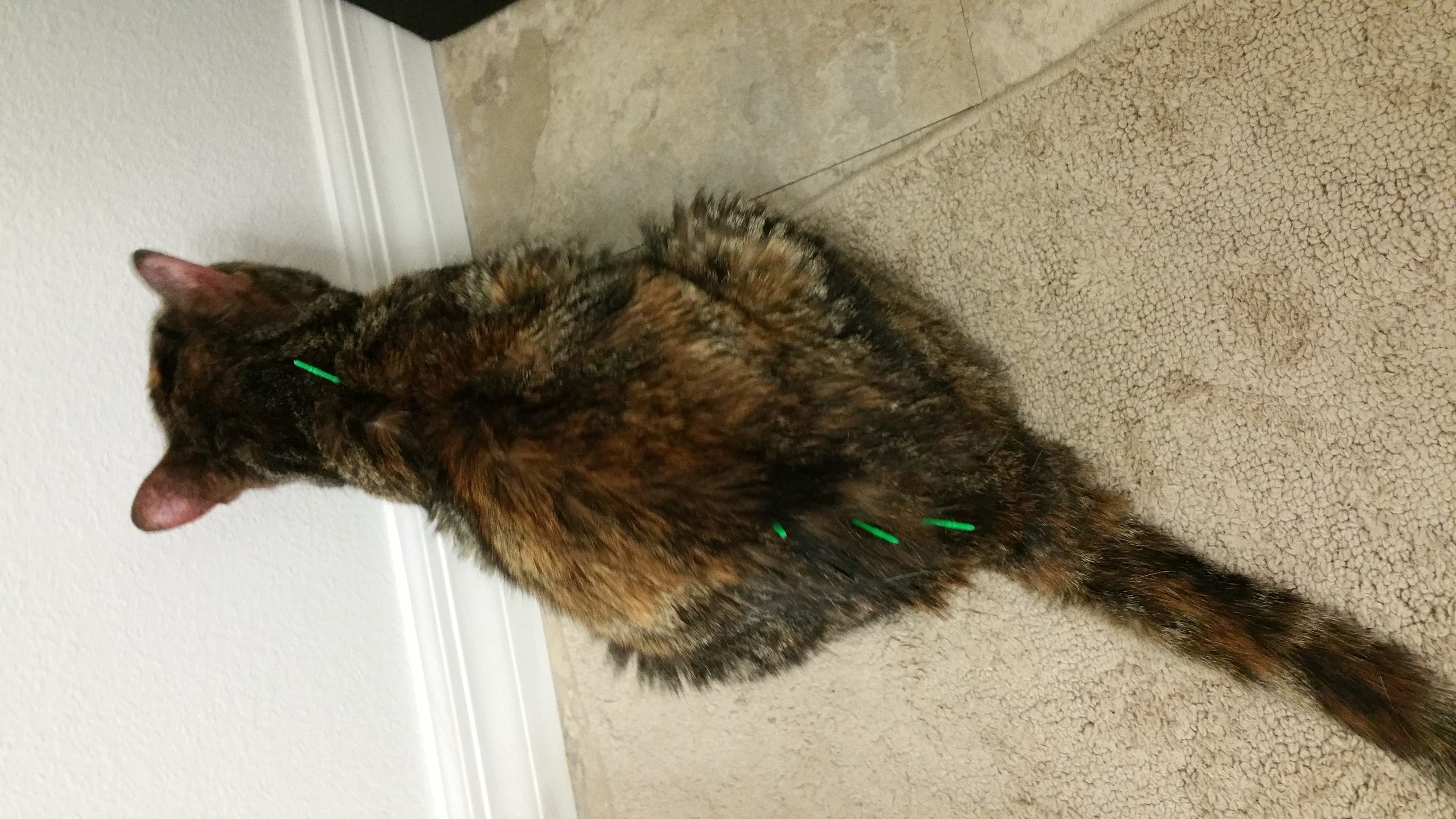Does My Cat Have Arthritis?

“My Cat Is Getting Old.”
Really? Old age is not a disease.
Here are some common things Doc Truli hears when a cat actually has arthritis, disc disease or hip dysplasia:
- “She takes a long time to line up a jump.”
- “He doesn’t get up on the bed anymore.”
- “She hates when I touch her lower back.”
- “He used to chase the lizards all.the.time.”
- “I thought she was just getting old.”
If you notice your cat’s habits and behavior changing, there’s a good reason. You should schedule a check-up with your trusted family veterinarian or an integrative, holistic-minded veterinarian.
Why Slow Twitch and Fast Twitch Muscles Matter to Your Cat
Your cat will never admit it, but they care about fast twitch muscles especially. Why? Cats have more fast twitch muscles than people and dogs. What on earth are fast twitch muscles? Let me explain.
There are so-called slow twitch and fast-twitch muscles in the body. The slow twitch are what we generally use for prolonged activity, like distance running. Cats have more fast-twitch muscle fibers than humans. That’s why the Cheetah holds the mammal land-speed record and not a human!
Fast-twitch muscles have explosive-type action. For example, a cat has many more fast-twitch muscles in their haunches than humans. They use them to jump from the floor to the top of a grandfather’s clock in one leap, for instance. Most dogs and humans cannot create a burst of muscle activity that launches the body up 10 or 20 times their height! That would be like an average person jumping up to a balcony on a 5 or 6 floor building in one jump. That is what cats do when they jump unto your door frame, or the kitchen cabinets, or the grandfather’s clock, or an unfortunate curtain rod.
Of course, not all cats are that motivated or athletic, but even a ordinary cat can jump up onto the bed. That is 4-5 times their height! The kitchen counter…can your dog get up there acutely, confidently in 1 leap? We expect our cats to make a jump like that unless they are a differently-abled cat. We expect it so much that – be honest- we either get startled and alarmed if they miss, or we stifle a muffled laugh. Because cats usually don’t miss. That’s fast-twitch muscles in action.
Why Fast Twitch Muscles Matter to Your Older Cat
The Type II fast twitch muscles deteriorate quicker than the Type I slow twitch muscles as we age. The fast twitch muscles help us with that burst of muscle activity we need to get up out of a comfy chair – or off the toilet! We start having trouble “getting up,” and start relying on that brushed stainless steel helper-handle in the handicapped stall at a restaurant. But really, we notice we need to push up off the chair arms instead of just using our legs as we age. That is fast twitch muscle loss. And we lose it before the slow twitch muscles.
Now, imagine you are a cat. You are made of fast-twitch muscles compared to your humans! So what goes first? Your ability to “get up.” First the cabinet-tops, then the counter, then the bed, then the sofa, then the stairs, then…you “sleep a lot.” (More than a younger cat.) So likely the very first sign your cat is aging and needs holistic help is inability to jump and “get up” like they used to.
What About the Cat Arthritis?
Arthritis is thought to be a degenerative condition. In other words, it doesn’t happen over night. We miss the signs along the way that our pets are headed for pain. Loss of fast-twitch fibers evidenced by decreased jumping are subtle early signs your cat could use some veterinary help. Treatments like cold laser therapy, EMF, medical massage, physical therapy, nutritional support, acupressure, acupuncture and electro-acupuncture show promise to help cats age gracefully. These treatment modalities are all the practice of veterinary medicine in the State of Florida. Be certain the person you hire to help you is licensed to practice on your cat.
-Dr Truli is available for in-home evaluations for the Tampa Bay, Florida area. Please call (877) 378-7854 for appointment availability.
If you are not in the Tampa, Florida area, you can find a Integrative Medicine veterinarian by:
- ask your veterinarian if they have training in these modalities or if they can refer to a trusted colleague in your area
- go to tcvm.com under resources and “find a practitioner” – this is a worldwide search database
- go to ahvma.org under practitioner search – this is mostly United States, but also some worldwide members in the database


